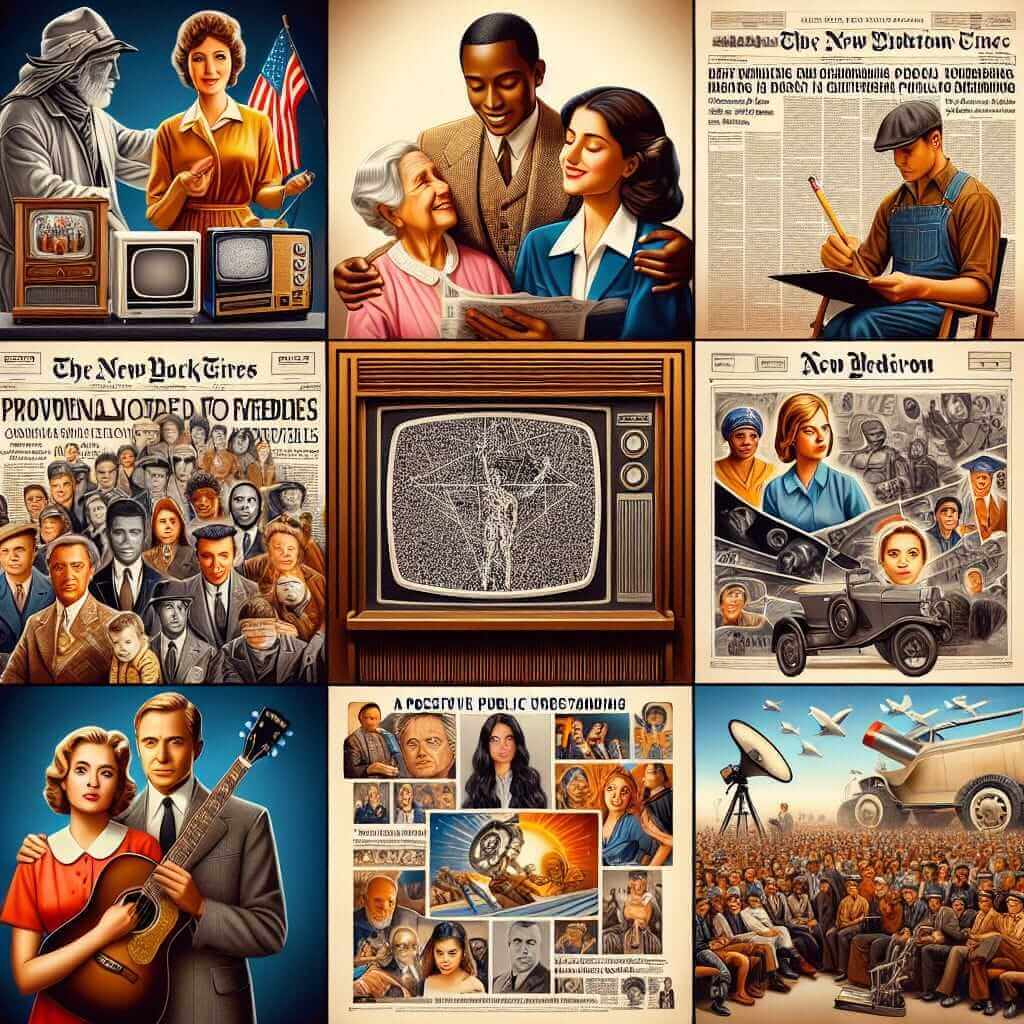The influence of media representation on minority groups is a topic frequently appearing in IELTS Writing Task 2, reflecting its relevance in today’s globalized world. This essay will delve into this complex issue, examining how media portrayals can shape public perception and analyzing the potential consequences.
Nội dung bài viết
Based on recent trends in IELTS exams, here are some potential essay questions:
- To what extent do you agree that media representation of minority groups accurately reflects reality? (This question focuses on evaluating the accuracy of representations.)
- Discuss the positive and negative effects of media representation on minority groups. (This question requires a balanced discussion of both sides of the issue.)
- Some people believe that media has a responsibility to portray minority groups positively. To what extent do you agree or disagree? (This question explores the ethical considerations of media representation.)
These questions have appeared consistently over the past few years, indicating a high probability of encountering similar themes in future exams. Understanding the nuances of these questions is crucial for achieving a high band score.
Sample Essay: Discussing the Impact of Media Representation
Analyzing the Task
Let’s choose the second question, “Discuss the positive and negative effects of media representation on minority groups,” for our sample essay. This question requires us to:
- Discuss: Provide a balanced analysis of both positive and negative aspects.
- Effects: Focus on the consequences of media representation.
- Minority groups: Consider the specific impact on groups that are underrepresented or marginalized.
Model Essay
Media representation plays a pivotal role in shaping public perception, particularly when it comes to minority groups. While the media can be a powerful tool for promoting understanding and inclusivity, it can also perpetuate harmful stereotypes and exacerbate existing inequalities. This essay will delve into both the positive and negative effects of media representation on minority groups.
On the one hand, positive representation can be instrumental in challenging prejudice and fostering empathy. When media outlets showcase diverse characters in positions of power, challenge stereotypes through nuanced storytelling, and celebrate the achievements of minority communities, it can contribute to a more inclusive and equitable society. For instance, the increasing visibility of LGBTQ+ characters in mainstream television shows has played a significant role in normalizing same-sex relationships and fostering acceptance among wider audiences.
However, negative or limited representation can have detrimental consequences. Stereotypical portrayals, underrepresentation, and tokenism can reinforce existing biases and contribute to a sense of marginalization within minority groups. When a particular group is consistently depicted in a negative light – for example, as criminals or welfare recipients – it can lead to discrimination and prejudice in the real world. Furthermore, the lack of representation itself sends a powerful message that these communities are not valued or considered important by society.
In conclusion, while media representation has the potential to be a powerful force for good, it is essential to acknowledge and address the potential negative consequences. By promoting diverse and accurate portrayals, challenging stereotypes, and ensuring that all members of society are represented fairly, the media can contribute to creating a more just and equitable world for all.
(Word count: 278)
Writing Tips:
- Balance is Key: When discussing both positive and negative aspects, ensure a balanced approach.
- Real-world Examples: Use specific examples from movies, TV shows, or news to illustrate your points.
- Vocabulary: Utilize vocabulary related to media and representation (e.g., portray, depict, stereotype, bias, inclusivity).
Essential Vocabulary:
- Representation (noun /ˌreprɪzenˈteɪʃn/): The way someone or something is shown or described.
- Perpetuate (verb /pərˈpetʃueɪt/): To make something continue for a long time.
- Stereotype (noun /ˈsteriətaɪp/): A fixed idea about what a particular type of person or thing is like, especially one that is wrong.
- Marginalization (noun /ˌmɑːrdʒɪnəlaɪˈzeɪʃn/): Treatment of a person, group, or concept as insignificant or peripheral.
- Tokenism (noun /ˈtoʊkənɪzəm/): The practice of making only a perfunctory or symbolic effort to be inclusive to members of minority groups.

Conclusion
The effects of media representation on minority groups are far-reaching and complex. By understanding the nuances of this topic and developing strong arguments supported by relevant examples, you can confidently tackle any IELTS Writing Task 2 question on this subject. Remember to practice writing essays on similar themes to enhance your writing skills and vocabulary.